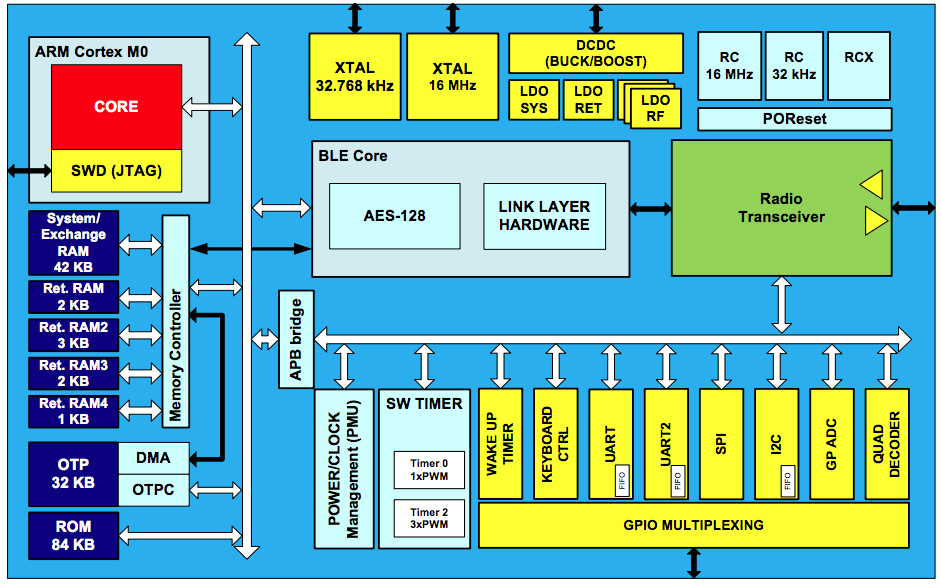Bluetooth-enabled smartphones and tablets are now the constant companions of many shoppers, including those that shop regularly in retail malls. As it’s now possible to track shoppers within malls and within individual stores using Bluetooth electronic beacons, this has created a golden opportunity for retailers to deliver sales messages – advertising to them when they’re most likely to be responsive. As one provider of this new shopping technology words its own sales pitch: “Target your customers with personalized recommendations – in real-time, at the perfect moment to encourage purchase.” This is one of the most exciting of several new location-based services enabled by the latest Bluetooth technology and the market for such services is expected to grow from $8.12 billion in 2014 to nearly $40 billion by 2019, according to analyst MarketsandMarkets. Other services include indoor navigation, asset tracking and mobile payments.
If they decide to engage with the technology, consumers can be confident that they don’t miss a shopping opportunity. And they can choose whether to have their phones switched on, as well as whether to run the apps that respond to the electronic messages retailers push at them. Consumers must have Bluetooth switched on and must allow “push’ messages, so they remain in control. The retailers benefit from a low cost, context-aware way to deliver sales offers. Perhaps more importantly, they are able to gather and analyze data about customer journeys – physical journeys through their stores and commercial journeys that capture buying habits. When that data becomes available for thousands of customers, the information becomes very powerful – this is the essence of “big data”.
So what’s the technology that underpins this revolution? In almost every instance, it’s Bluetooth Low Energy, often referred to as “Bluetooth Smart”. The same technology is also found in proximity tags that simply send an alert to your smartphone or other receiver when you come within range.
Bluetooth Smart – why it’s the smart choice for beacons
Bluetooth has been with us for a few decades now but what is now called “Classic Bluetooth” is too power-hungry for beacon applications, which need to operate for months, if not years, on a single coin cell battery if they are to offer the required “place and forget” deployment capability. Bluetooth Smart radios are built into battery-powered, stand-alone beacons that broadcast advertising messages to shoppers as they come within range, typically somewhere between 5 metres and 50 metres of the beacon.
Key design criteria for beacons are that the infrastructure around them does not restrict where they can be placed, so they need to be small and unobtrusive. And, as with most consumer electronic devices, low cost is crucial.
Bluetooth Smart differs from Classic Bluetooth in a number of important ways that make it an attractive option for beacons:
- Classic Bluetooth radios typically draw around 40 mA at 3 volts but best-in-class Bluetooth Radios producing 0 dBm output (a power level perfectly suited to most beacon applications) can draw less than 5 mA at 3 volts while still offering a range of up to 50 m in many environments.
- Average power consumption in some applications may be only 100th of that of Classic Bluetooth, due to the relatively long periods during which a Bluetooth Smart device will be in sleep mode.
- Wake up time is just 6 ms, versus around 100 ms for Classic Bluetooth.
- It can send authenticated data in just 3 ms, versus up to 1 second for Classic Bluetooth.
- It offers 128-bit banking-level (AES-128) security to keep data safe.


Figure 1: Bluetooth Classic and Bluetooth Smart compared
Not all Bluetooth Smart implementations are created equal
Despite the energy savings promised by Bluetooth Smart, how the technology is implemented can have a dramatic affect on system energy consumption and battery life. The primary criteria for choosing a Bluetooth Smart radio system-on-chip (SoC) to form the heart of a beacon are peak current consumption, energy consumption over time (taking into account the requirements of the application), receiver sensitivity (the beacons need to receive a signal from your smartphone to know that you’re in range), and the ability to work from a single small battery, usually a coin cell, to keep the size down. In real-world applications, battery life will also depend upon the advertising interval – how often the beacon is required to transmit data – so when comparing device data, you need to ensure that the operating conditions under which the figures are quoted are the same, or at least very similar.
To gain a more detailed understanding of how energy is consumed while a beacon is operating, you need to determine the charge consumed versus time for each advertising operation. These parameters include:
- The advertising interval and charge per advertisement
- The time taken and charge consumed from cold boot until the first advertisement
- The time, peak current and charge consumed by each of the three advertising channels normally used
Also, you need to consider the processor resources that may be available for application code within the Bluetooth Smart SoC. If it’s possible to produce a completely hosted solution without resorting to an external microcontroller, this will again save design time, cost and space.
In selecting a Bluetooth Smart radio, other important considerations are sometimes overlooked. Functional integration will determine how many external components are needed to create the beacon. The fewer you need, the less design effort is required and the lower the cost of the end product. Fewer components also means you can make smaller products that will be more reliable. Design effort is also reduced if the Bluetooth Smart vendor offers a reference design and proven software.
A Bluetooth Smart beacon reference design
Dialog Semiconductor’s DA14580 “SmartBond” SoC integrates a Bluetooth Smart radio with an ARM® Cortex™-M0 application processor and intelligent power management. The processor and on-chip digital and analogue peripherals are accessible via up to 32 GPIOs. The device block diagram is shown in Figure 2.


Figure 2: Dialog Semiconductor DA14580 simplified block diagram
Excluding any current limiting resistors needed for buzzers or LEDs, Dialog’s DA14580 beacon reference design needs only 12 external components: 6 capacitors, a 16 MHz crystal, 3 inductors and 3 resistors.
The device, which is available in either a 2.5 x 2.5 x 0.5 mm WL-CSP or 5 x 5 x 0.9 mm QFN40 package, has a peak current consumption of 4.8 mA at 3 volts when transmitting at 0 dBm and this falls to 1.4 µA in extended sleep mode and less than 0.7 µA in deep sleep mode with memory retention. Each advertising event consumes 9.53 µC (total for all 3 channels). Receiver sensitivity is -93 dBm.
Figure 3 shows the reference design implemented in a polyurethane enclosure measuring 20.3 x 39.9 x 5.8 mm. Inside the enclosure, is a 16.9 x 23.7 x 1.00 mm printed circuit board and a 70 mAh CR1016 coin cell battery.
Figure 3: DA14580 Bluetooth Smart beacon reference design implemented in a small, tough polyurethane enclosure
Using the reference design, the battery life when advertising every 0.7 seconds is calculated as 178 days. Advertising every 5 seconds extends this to 730 days – a full 2 years.
Dialog supplies ready-proven beacon software with its reference design. This features programmable UUID and advertising intervals, channel selective beaconing to reduce power, connectable beacon-for-beacon update and deployed beacon fleet management. It also enables interleaved, connectable and non-connectable advertising events from a single beacon.
Conclusion
The Bluetooth tags and beacons market is forecast to grow at over 25% per annum over the next 4 years. Those products that succeed will be those that are small, reliable, and offer a combination of lowest cost-of-ownership and longest battery life. In selecting an integrated circuit to power a Bluetooth Smart beacon, it’s necessary to examine the specifications of competing parts in details to gain an in-depth understanding of how they are likely to perform in a given application.











